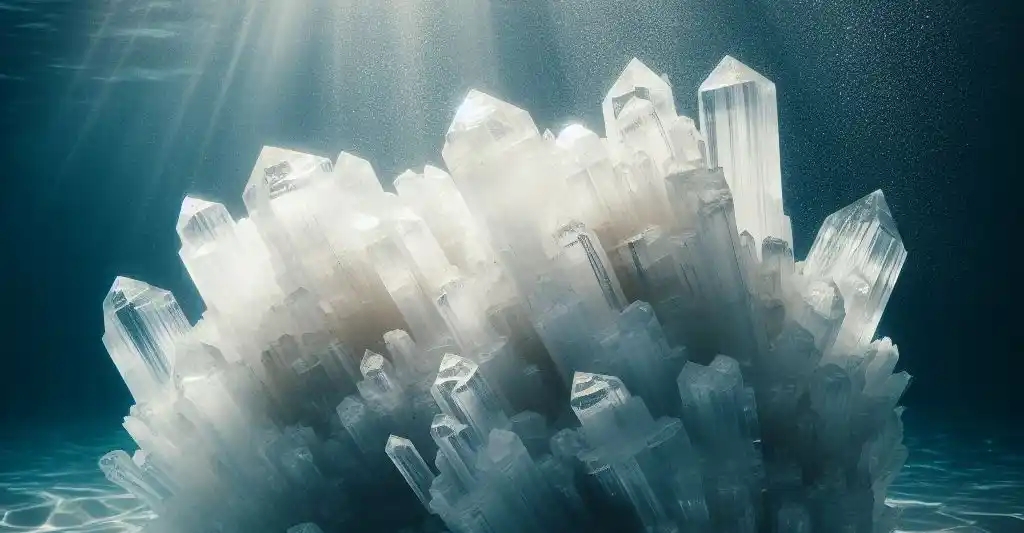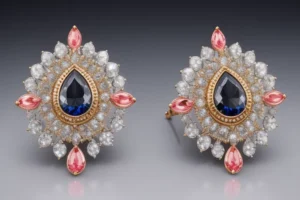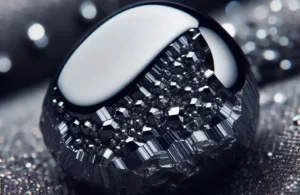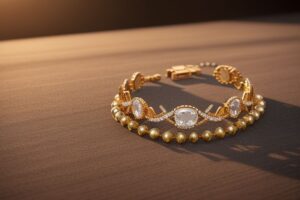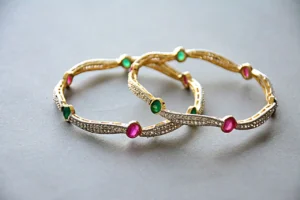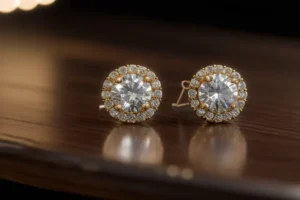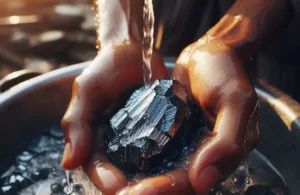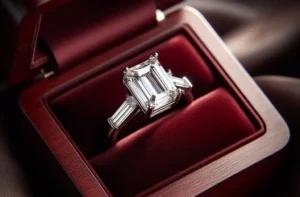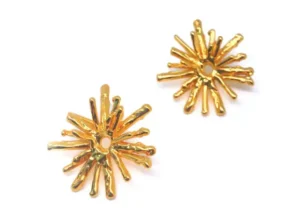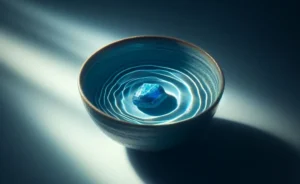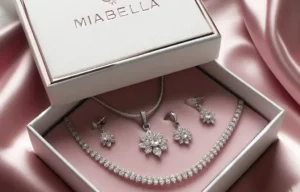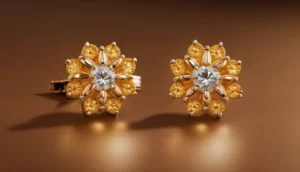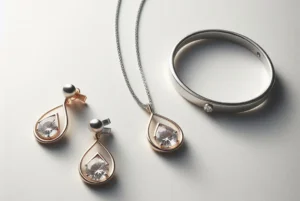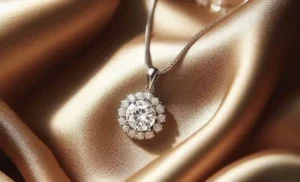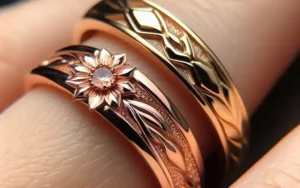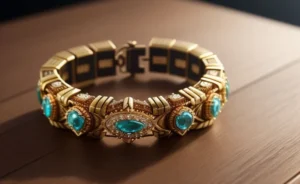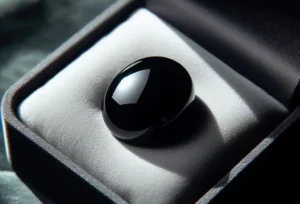Selenite, a stunning and serene mineral, is renowned for its translucent elegance and purported metaphysical properties. As it graces more homes and spaces, a critical question arises – can selenite get wet?
This question is more than just about maintaining its physical appearance; it’s about understanding the relationship between selenite and one of the most common elements on Earth: water.
Let’s delve into the depths of this topic, exploring the chemistry, the immediate and long-term effects of water on selenite, and how to care for these delicate crystals properly.
Can Selenite Get Wet?
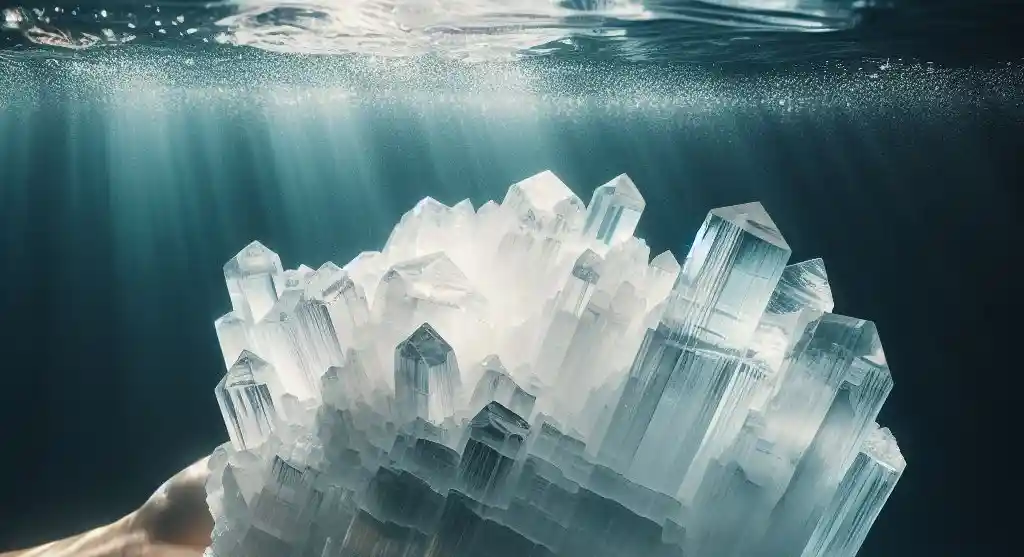
In essence, selenite can technically come into contact with water, but doing so is not recommended due to the mineral’s highly sensitive nature to moisture. Water exposure, even briefly, can initiate visible and structural damage to selenite crystals.
This mineral’s composition makes it particularly vulnerable to water, as it can dissolve or become cloudy and lose its luster when wet.
Although a quick splash may not immediately devastate the crystal, any prolonged or repeated exposure to water significantly risks its integrity, leading to potential deterioration or complete dissolution over time.
Thus, while selenite can encounter water, it is crucial to avoid such interactions to maintain the crystal’s beauty and structural health.
Understanding the Composition of Selenite
At the heart of selenite’s allure lies its unique composition, a form of gypsum known scientifically as calcium sulfate dihydrate. This mineral stands out due to its inherent clarity and ability to form in elongated crystals, as well as in sheets so thin they appear almost ethereal.
Its name, derived from the Greek word for moon, perfectly captures the gentle, moon-like sheen it emits, a quality that has fascinated collectors and enthusiasts for centuries. The crystalline structure of selenite, responsible for its translucent glow, also accounts for its sensitivity to moisture.
The delicate arrangement of its molecules allows light to pass through, creating its signature luminescence. However, this same structure makes it susceptible to water damage, as the bonds between molecules can be weakened or broken by prolonged exposure to water.
Additionally, the gypsum that comprises selenite contains water molecules within its crystal lattice, a characteristic that contributes to its vulnerability when additional water interacts with it.
This intimate relationship between selenite’s composition and its reaction to water underscores the importance of understanding its physical makeup to properly appreciate and care for this mineral.
The Immediate Effects of Water on Selenite
Upon contact with water, selenite begins to show immediate changes that can mar its captivating appearance. The water acts on the mineral’s surface, dissolving and altering its texture, which can lead to a loss of its characteristic sheen and smoothness.
This interaction between selenite and water can result in a visible cloudiness, detracting from the crystal’s clarity and luminosity.
Additionally, should the water evaporate swiftly, it might leave behind a residue of gypsum crystals, manifesting as a white, powdery layer that further impacts the aesthetic appeal of the selenite.
This immediate reaction to water is a testament to the mineral’s delicate nature and highlights the importance of avoiding its exposure to moisture to preserve its enchanting qualities.
Long-Term Damage from Water Exposure
The gradual yet irreversible impact of water on selenite over time cannot be understated. With each instance of exposure, the mineral’s structure endures further weakening, a process that significantly compromises its integrity.
This progressive deterioration is not merely superficial; it affects the crystal at a molecular level. The delicate lattice that gives selenite its strength and luminosity becomes compromised, leading to a marked increase in brittleness.
In extreme cases, this can render the selenite so fragile that even the gentlest touch may cause it to crumble, a clear testament to the damage that prolonged water contact can inflict. Moreover, consistent moisture exposure can lead to a complete dissolution of the mineral, especially if submerged for extended durations.
This level of damage goes beyond aesthetic concerns, stripping selenite of its physical form and the qualities that make it so valued. To protect these delicate crystals from such fate, it’s essential to mitigate their exposure to water, preserving the beauty and structural integrity that define them.
How to Properly Clean Selenite Without Water
Maintaining the pristine appearance of selenite without exposing it to water requires a gentle and careful approach. Begin by lightly dusting the crystal using a soft brush, such as a paintbrush or a makeup brush, which can navigate the crystal’s grooves and ridges without causing abrasion.
This method helps remove surface dust that can accumulate over time, ensuring the selenite retains its luminous quality.
For areas with more stubborn dirt, consider using a dry microfiber cloth. Gently rub the surface in a circular motion to lift any grime. In situations where a deeper clean seems necessary, employing compressed air can dislodge particles from tighter spaces without any physical contact.
If you must use a cloth for more thorough cleaning, ensure it’s barely damp by wringing it out thoroughly to minimize moisture. After passing over the selenite, immediately follow up with a dry, soft cloth, carefully patting the area to remove any trace moisture that might have settled on the surface.
This approach safeguards the mineral from potential water damage while keeping it clean and vibrant. Adopting these non-invasive cleaning methods ensures the longevity and preservation of selenite’s natural beauty, allowing it to continue serving as a serene and striking addition to any space.
Safeguarding Selenite from Accidental Water Damage
To protect selenite from the dangers of accidental water damage, thoughtful placement and preventive measures are essential. When deciding where to display your selenite pieces, choose areas known for being dry and away from direct sources of moisture.
This includes avoiding spaces like bathrooms and kitchens, which can have fluctuating levels of humidity and potential splashes of water. Similarly, placing selenite near open windows might expose it to rain, so opt for safer, interior locations within your home or office.
Utilizing protective display cases or stands can provide an additional layer of security for your selenite, especially in environments where accidental spills or water exposure might occur. These protective barriers not only shield the mineral from direct contact with water but also help in maintaining a controlled environment, reducing the risk of humidity affecting the crystal.
Incorporating silica gel packets in the vicinity of your selenite display can also help absorb any excess moisture in the air, providing an extra precaution against the dampness that could potentially harm the crystal.
Being proactive in the placement and protection of your selenite will go a long way in preserving its natural beauty and structural integrity, ensuring that it remains unaffected by the adverse effects of water exposure.
Embracing Selenite’s Beauty with Proper Care
Caring for selenite goes beyond simply admiring its beauty; it involves a commitment to preserving its natural, luminous quality through mindful handling and maintenance. This commitment to care allows us to enjoy the serene and calming presence that selenite brings to our environments.
Unlike other minerals, selenite demands that we engage with it more thoughtfully, considering its vulnerability to water and the need for dry, gentle cleaning methods. Using soft brushes to dust off its surface and avoiding direct contact with moisture ensures that its ethereal glow remains undiminished.
Additionally, the thoughtful placement of selenite in our spaces, away from potential water exposure, reflects our understanding of its needs and our desire to maintain its beauty.
Protective measures, such as display cases or the use of silica gel packets, further exemplify the proactive steps we can take to shield selenite from environmental factors that could mar its appearance.
Through these careful practices, we honor the delicate balance between selenite’s resilience and its susceptibility to damage, ensuring that its captivating presence continues to enhance our lives.
Engaging with selenite in this attentive manner deepens our connection to its tranquil essence, reinforcing the value of nurturing and protecting the natural wonders in our care.
Final Thoughts: The Resilience and Vulnerability of Selenite
The intricate balance that selenite maintains between its robustness and fragility underscores a profound lesson about the natural world. Its ability to transmit light and retain beauty speaks to a certain strength, yet its susceptibility to water reveals a poignant vulnerability.
This juxtaposition not only enhances our appreciation for selenite but also emphasizes the importance of informed, gentle care. It challenges us to engage more deeply with our environment, recognizing the nuances of each element we encounter.
Selenite, with its luminous grace and delicate constitution, acts as a beacon, guiding us toward a more mindful interaction with the natural treasures under our stewardship.
Its interaction with water serves as a powerful metaphor for the broader environmental considerations we face today – a reminder that our actions, even those seemingly small or benign, can have profound impacts on the natural world.
As we navigate the complexities of caring for selenite, we are reminded of the broader responsibility we carry for all natural wonders in our care, each requiring a unique understanding and approach to ensure their preservation.
Through this lens, selenite teaches us about the beauty of balance, the art of attentive care, and the value of respecting the vulnerabilities inherent in the natural world.
Frequently Asked Questions
Q: How long can selenite be exposed to water before it gets damaged?
A: Even brief exposure to water can start to affect selenite’s appearance by making it cloudy. Prolonged contact should be avoided as it can lead to more serious damage or even dissolution over time.
Q: Can selenite be used in jewelry that might get wet, like rings or bracelets?
A: Given its vulnerability to water, selenite is not recommended for use in jewelry pieces that are likely to come into regular contact with water, such as rings or bracelets that are worn daily.
Q: Is it safe to clean selenite with a damp cloth?
A: It’s best to avoid using a damp cloth. If necessary, ensure the cloth is very lightly dampened and immediately follow up with a dry cloth to prevent moisture from penetrating the crystal.
Q: Can selenite be left outdoors?
A: Due to its sensitivity to water, leaving selenite outdoors where it might be exposed to rain or high humidity is not advisable. It’s best kept in dry, indoor environments.
Q: What happens if my selenite gets wet accidentally?
A: Dry it immediately with a soft, dry cloth. While accidental, brief exposure might not cause immediate damage, it’s important to minimize the moisture contact to preserve its integrity.

